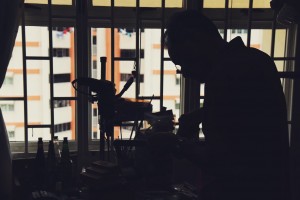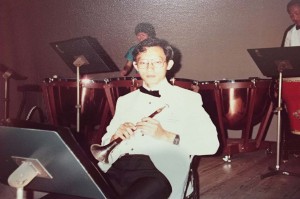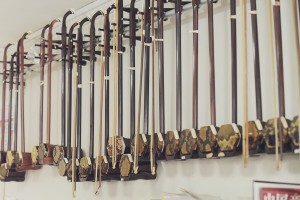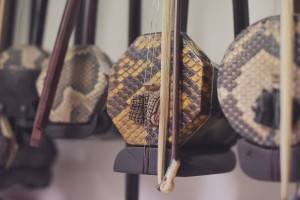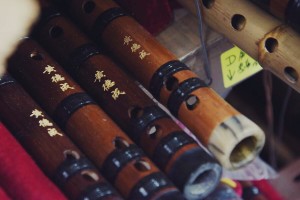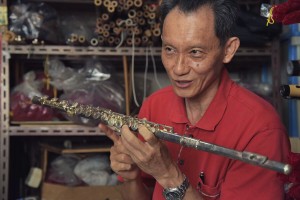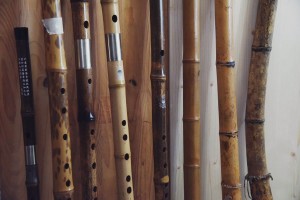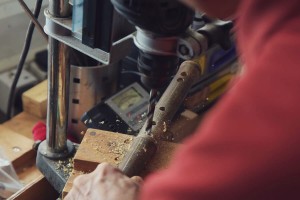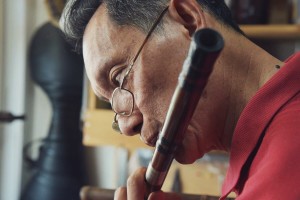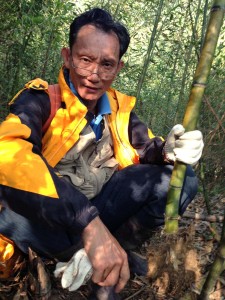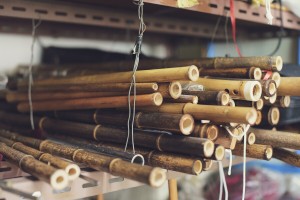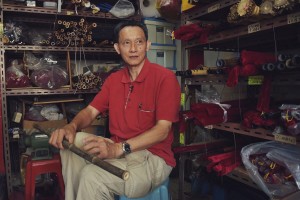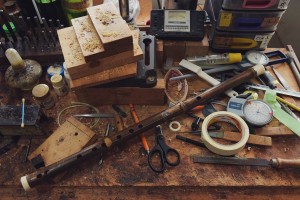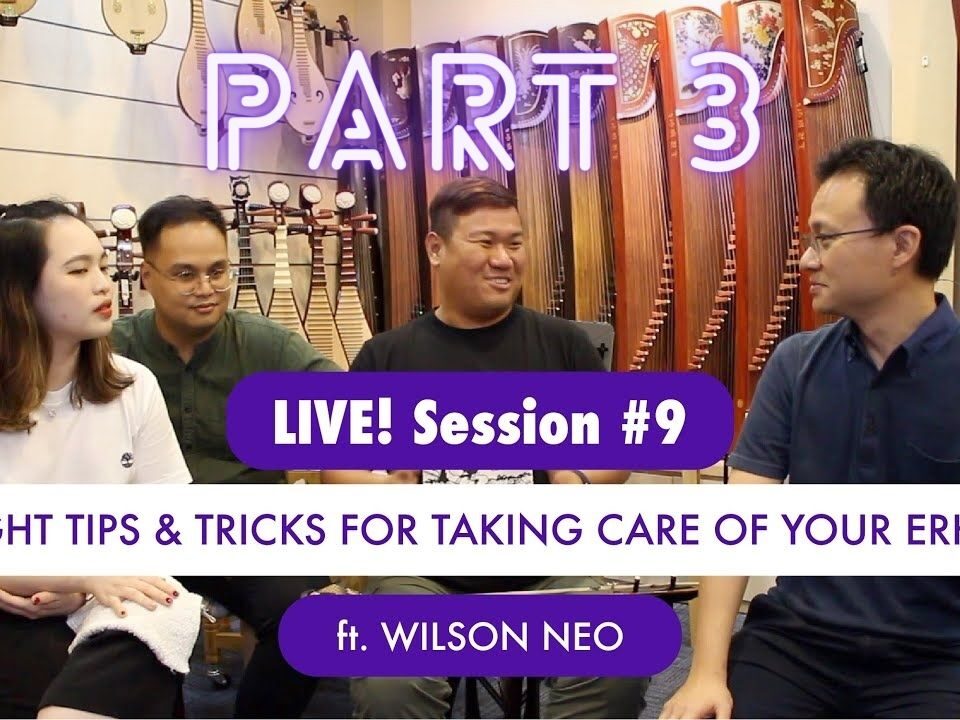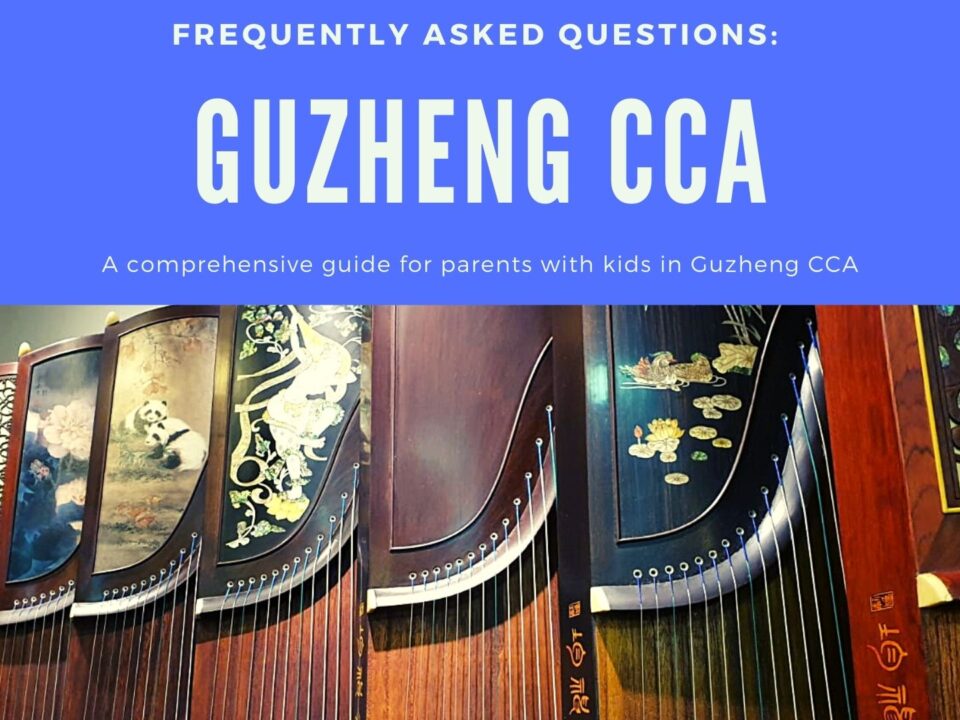Directions to our new place!
June 7, 2016Avid user of Snapchat and Instagram?
July 5, 2016Singaporean Dizi Maker Ng Teck Seng
Almost all good Chinese bamboo flutes are made in China. However, Ng Teck Seng, our very own Singaporean flute maker, makes Dizis personally in his humble HDB flat.
Recently, our local news agency, Channel News Asia, did a series on Singapore craftsman and Ng Teck Seng was one of them.
We are proud to be the official distributor of Ng Teck Seng Dizis and Xiaos. More information about him and his flutes were included in the post by CNN.
Extracted from Channel News Asia http://www.channelnewsasia.com/news/singapore/in-china-this-singaporean/2858274.html?cid=FBcna:
In China, this Singaporean flute-maker is a ‘sifu’
By Lam Shushan Posted 19 Jun 2016 18:26 Updated 22 Jun 2016 13:00
Master craftsman Ng Teck Seng’s lifelong wwwotion to fixing a century-old discord in chinese orchestral music has gained the attention of China’s leading music school.
SINGAPORE: Shelves of bamboo and homemade tools line his 3- by 4-metre workspace, while sawdust coats the floor and floats through the air.
This is the special room in his HDB flat where, over the course of 20 years, Mr Ng Teck Seng has crafted more than 2,000 bamboo flutes (Dizi) and 100 Chinese violins (Erhu) used by musicians from world-class Chinese orchestras in China, Singapore, Hong Kong and beyond.
Mr Ng took up flute-making as a hobby in 1986, but only started doing it full-time in the mid-90s.
The 57-year-old claims to be one of the few people to apply the western music theory of acoustics to the ancient tradition of Chinese flute-making. He also claims – and not without merit – to be able to make better instruments than anyone else.
After all, late last year, he was invited by the China Conservatory of Music to head a new department that will focus on the research and wwwelopment of Chinese musical instruments. He heads to Beijing in August this year to lead the team.
And just this month, he learnt he would receive financial support from the National Arts Council (NAC).
“Twenty years ago, I would never have dreamt that my efforts would be recognised this way. Now I feel like it’s almost a burden – I have this responsibility to promote the culture and craft,” he says as we chat in his five-room flat in Boon Lay.
Mr Ng at work in his 3-by-4m room in his flat in Boon Lay. (Photo: Ray Yeh)
THE MUSICAL DISHARMONY
Today, Mr Ng has promised to show me how to make a bamboo flute.
He uses a method that he evolved over years of trial and error – poring over books to research the best techniques even after having his applications for funding twice turned down, according to him.
He drags two stools into the room, kicking up more dust into the air that is illuminated by sunlight streaming in through the window. As we settle down, he proudly flashes a sheet of paper.
“My offer letter from the university,” he says with a huge grin on his face.
Mr Ng was not content just being a musician. He wanted to raise the level of Chinese orchestral music. (Photo courtesy of Ng Teck Seng)
Mr Ng was a full-time musician with the Singapore Chinese Orchestra (then known as the People’s Association Orchestra) from 1982 to 1995, as their principal Suona (Chinese trumpet) player and a conductor.
But there was always something that nagged at him about the way Chinese instruments – which are beautiful and soulful when played solo – sounded together in an orchestra. This off-note of disharmony grew into such an obsession, that he quit the orchestra so that he could wwwote his life to solving the problem.
He explains it thus: “You may feel that Chinese music is nice, but a bit too noisy right? Because the noise ratio is too high – you get tired listening to it. Just like If I’m screaming in front of you, you will feel tired very easily right?”
The walls of his home are lined with Chinese Violins (Erhu), which he has also spent the past 20 years perfecting. (Photo: Lam Shushan)
Chinese music dates back thousands of years, but the first orchestras only started to appear in the early 1900s, copying the model of the Western symphony orchestra.
The problem with that, says Mr Ng, is that Chinese instruments were designed to be played solo, or to be noisemakers at festivals, not played in harmony in an orchestra.
“When you play the Suona, it is too loud. In the open space you need that volume, but indoors you cannot endure its power.
The body of the Erhu is wrapped with snakeskin. (Photo: Lam Shushan)
“For the Erhu, the sound is very nice, but far away you cannot hear it. This is because of the acoustics (of the instruments),” he says.
Put them together in a concert hall, and you get the discordant mixture of loud wind instruments overpowering the sound of the faint strings that clash with a cacophony of Chinese cymbals. Even the best composers and conductors have not been able to find a way to balance out this disharmony.
“My conductorship may very good, but until you can improve the acoustics of the instruments, you will not solve the problem of orchestration,” Mr Ng says.
Mr Ng estimates that he has made more than 2,000 bamboo flutes in the last 20 years. (Photo: Ray Yeh)
FROM STRADIVARIUS TO THE ERHU GRANDMASTERS
As he speaks, Mr Ng moves his hands through the air as though conducting a symphony. He talks passionately and in detail about scientific principles of acoustics – frequency, signal-to-noise ratio, tone colour.
He turns around and rummages through his stash of flutes, pulling out an old tarnished brass version. He holds it up against a Chinese bamboo flute that looks primitive in comparison.
“(Theobald) Boehm, you know? The father of the modern flute. In 1847 he already established this flute. They were way more advanced in terms of musical acoustics,” he says.
Mr Ng says Western instruments are far more advanced than Chinese instruments – the flute is an example. (Photo: Ray Yeh)
Mr Ng taught himself about acoustics, studying the different techniques of instrument making – from the Stradivarius way of crafting violins, to the best Erhu makers in China. He read up extensively, such as on how Boehm perfected the modern flute.
What he found was that the grandmasters in China still make instruments using age-old techniques – they rely on their feelings and senses to tune instruments, unlike Western makers who centuries ago had wwwised scientific ways of grappling with acoustics.
The Chinese bamboo flute in various stages of completion. Right to left: Raw bamboo, the bamboo is heated and straightened, holes are drilled, the bamboo is polished and decorated. (Photo: Ray Yeh)
Of the Chinese makers, he says: “Their blind spot is that they cannot differentiate between the aesthetic and the acoustic. So the instrument may produce a very nice sound but it cannot project well.”
In addition, the inconsistency in the quality of instruments produced means that the same type of instrument can produce a different type of sound, or tone colour, which affects the way the notes come together in the Chinese orchestra.
Mr Ng uses a power drill mounted on stand to carve out the holes in his flute. All of the tools he uses to make his flutes are improvised. (Photo: Ray Yeh)
Mr Terence Ho, CEO of the Singapore Chinese Orchestra, put the problem to me this way: “You look at the Dizi – you don’t just drill holes and that’s it. You have to measure at which precise positions to drill and how big the holes are, how deep the holes are, to make this instrument sound right and good.”
Meanwhile, as I talk with Mr Ng, he picks out a bamboo stick, marks some measurements, and starts to drill the first hole in the flute. Then he files off the rough edges with sandpaper, and with a gentle breath, blows the first musical note out of the instrument.
Mr Ng repeats his process of measuring, drilling, filing and testing.Then he proceeds to fine tune the instrument using a machine to help him measure the pitch.
“I am trying to cultivate one system to find out the best dimensions that will produce the best acoustic range, noise ratio and tension. Then we can find out the maximum potential of the instrument,” he says.
Mr Ng tests out one of his flutes. (Photo: Ray Yeh)
“IF IT CANNOT PIERCE YOUR HEART, WHAT’S THE PURPOSE?”
I look around at Mr Ng’s collection of wild bamboo – specimens that he gathered from the forested mountains of countries like China, Taiwan and Japan. Some of the bamboo sticks are as large as a baseball bat, others as tiny as a pen.
He plays a couple of tunes on a bamboo flute and a brass flute to show me the tonal difference in both instruments. He starts with the bamboo flute. It is airy and high-pitched, taking me to the misty mountains of ancient China.
Then he moves on to the brass flute. The sound is a lot more dense, and the sophistication of the instrument, its solid body and precisely-manufactured keys, produces a much more stable sound with a wider range.
Mr Ng gathering wild bamboo in a forest in Taiwan. (Photo: Ng Teck Seng)
Why, then, does he still choose to use bamboo when his goal is to raise the level of sophistication of Chinese music?
“Why not another material? Because it won’t be Chinese music anymore! The bamboo flute has been around for a thousand years. Throughout history, they did try to use jade stone, glass, PVC pipes, but the bamboo flute survived because people liked it the most,” Mr Ng says.
“If you change the tone and the timbre, it cannot pierce deep into your heart. Then what’s the purpose of making the instrument?” he adds.
Shelves of prototypes line Mr Ng’s workshop. (Photo: Lam Shushan)
Standing in this cramped space where ideas have been brewed, thousands of holes have been drilled, and a prism of tones created in search of musical nirvana, I wonder if until recently, all this had seemed like chasing after an elusive dream that few except himself cared about.
Says Mr Ng: “For the past two decades, I have had to fight to reach this technical breakthrough, but also fight against the bias of people who thought my project not feasible.”
“I am not content just being a musician in an orchestra,” he adds. ”I wanted to solve this problem in my lifetime. I think it is overwhelmingly important that you have the mission and passion to establish Chinese music – it goes beyond money.”
“I think it is overwhelmingly important that you have the mission and passion to establish Chinese music,” says Mr Ng. (Photo: Ray Yeh)
Now that he has gotten the backing of no less than one of the world’s most prestigious Chinese music schools, his next goal is to nurture a new generation of instrument makers who will make instruments his way.
Perhaps one day, he says, he will establish a brand that would be to Chinese music what Steinway and Sons is to the piano.
This is the second in a series of stories about Singapore makers, the craftsmen who are keeping artisan skills alive. Read our first story about a young bespoke shoemaker. Coming up: A designer who quit the modern fashion industry to learn Peranakan embroidery.
Follow @shushanlam on Twitter or CNAInsider on Instagram.
Job done – a finished bamboo flute on his workbench. (Photo: Ray Yeh)
——————————————————–
Check out Ng Teck Seng’s premium C, D, E, F, G and A key dizis at our online store!

